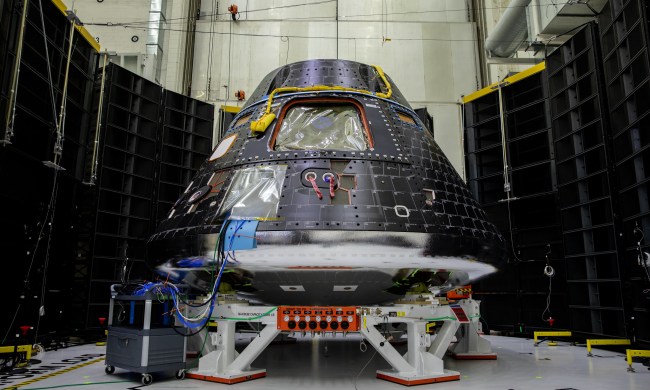Scientists know that Mars once had oceans of liquid water on its surface, and billions of years ago it may even have looked like Earth. But over time, this water was lost into space, leaving the planet in the arid state we see it today. Just how this happened in an ongoing mystery for scientists to investigate, and now new evidence suggests that the planet’s heat and dust play a key role in launching water into space.
Researchers used data from NASA’s Mars Atmosphere and Volatile EvolutioN or MAVEN spacecraft, a Mars orbiter that collects data on the upper atmosphere. They found that Mars is still losing water as vapor is sucked up from polar ice caps during the martian summer.
“We were all surprised to find water so high in the atmosphere,” said Shane W. Stone, a doctoral student in planetary science at the University of Arizona’s Lunar and Planetary Laboratory in Tucson. “The measurements we used could have only come from MAVEN as it soars through the atmosphere of Mars, high above the planet’s surface.”

In addition to warmer weather helping to move the water vapor, it is also affected by dust storms. These periodic storms have strong winds that help lift the water vapor higher. And once water vapor moves through the atmosphere, it is exposed to cosmic radiation and breaks apart into hydrogen and oxygen, which then escape into space.
“Everything that makes it up to the higher part of the atmosphere is destroyed, on Mars or on Earth,” Stone explained, “because this is the part of the atmosphere that is exposed to the full force of the Sun.”
The researchers found a particular storm over two days in June 2018 caused 20 times more water than normal to appear in the atmosphere. And in a 45-day period, Mars lost as much water as it normally does in one Mars year (around two Earth years). This means scientists need to adjust their models of how water moves and is lost from Mars.
“What’s unique about this discovery is that it provides us with a new pathway that we didn’t think existed for water to escape the Martian environment,” said Mehdi Benna, a Goddard planetary scientist and co-investigator of MAVEN’s NGIMS instrument. “It will fundamentally change our estimates of how fast water is escaping today and how fast it escaped in the past.”



